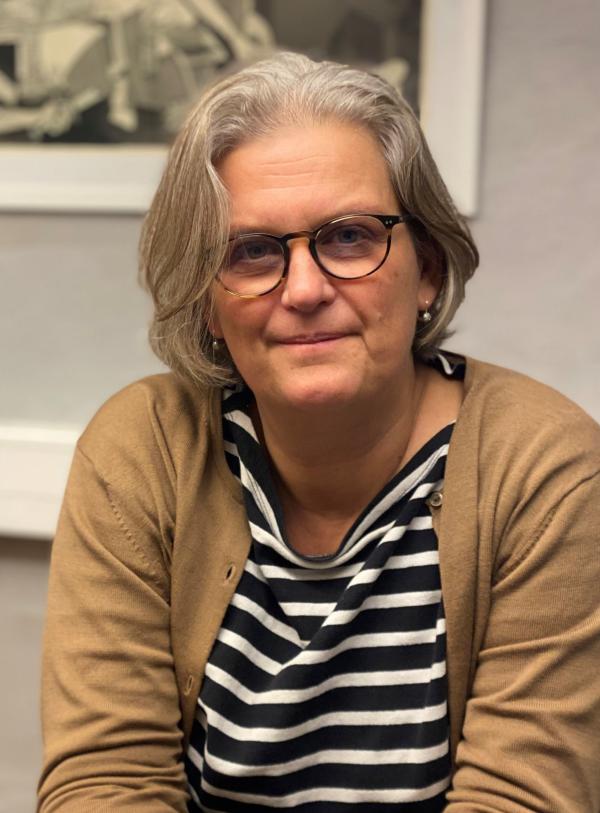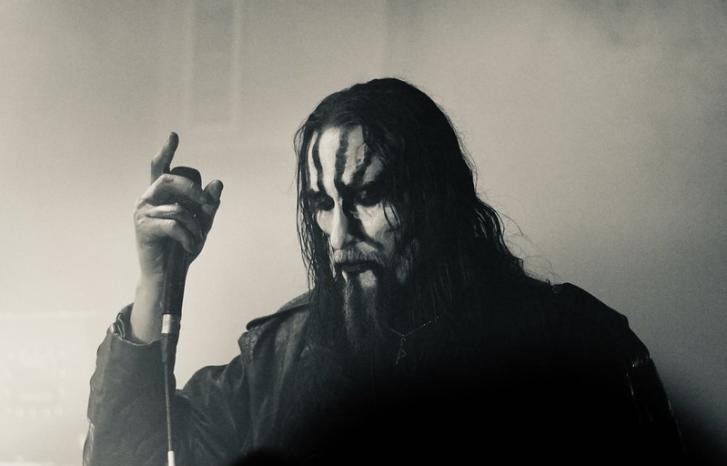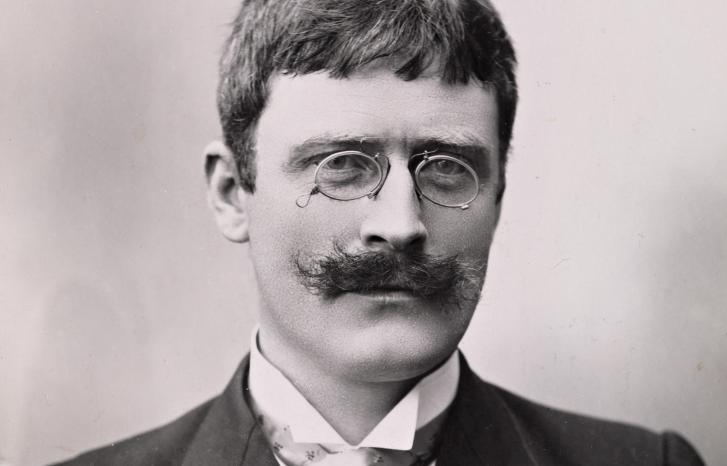“The idea behind our reading was to place My Struggle in a Norwegian context, in English, aimed at international readers,” says Inger Skjelsbæk.
There has indeed been a great number of readers: the six-volume work has now been translated into more than 30 languages, according to the publisher Forlaget Oktober’s website.
Skjelsbæk is a professor at the Centre for Gender Research at the University of Oslo and the Peace Research Institute Oslo (PRIO). She wrote the chapter “The Nordic Man, What Does Knausgaard Reveal?" in the book Knausgaard in Context. Iver B. Neuman is the editor of the anthology, and the nine contributing researchers represent a broad range of academic fields.
"My struggle" 15 years on

"It was a bit of a 'con amore' project," she explains.
“There were many rewarding conversations about My Struggle with the other contributors, both social scientists and humanists. We all read the book from different academic perspectives and with different viewpoints.”
Skjelsbæk text begins as follows: "Let me be honest, and personal", and she then admits that she did not read My Struggle when the first volume was published in 2009. The subject matter was too close to home:
“Perhaps that’s because I belong to the same generation and faced many of the issues the book raises when it was released, like balancing writing with work and family life," she explains.
“It was very interesting to read My Struggle 15 years after it was released. It was also riveting, irritating and moving. Knausgård's prose is fantastic, and many different emotions arise as the work spans more than 3,000 pages.”r.
Gender equality as a theme
Skjelsbæk wonders what Knausgård's novel can tell us about being a man in the Nordic countries at the beginning of the 21st century.
“While reading My Struggle, I was teaching a University of Oslo course for foreign students, on gender and gender equality in a Nordic context. It inspired me to read the book from that perspective," she says.
Skjelsbæk points out that gender equality policy is also an explicit theme in the book. In her chapter, she quotes some of Knausgård’s reflections from the second volume about life as an equal partner and father of young children in Stockholm:
“When I pushed the buggy all over town and spent my days taking care of my child, it was not the case that I was adding something to my life, that it became richer as a result, on the contrary, something was removed from it, part of myself, the bit relating to masculinity.”
“Knausgård describes how he does everything right and in accordance with the modern standard for fathers of young children in the Nordic countries: He picks up and drops off, makes food for and comforts his children, but feels trapped in his role as an equal father," says Skjelsbæk.
“His stated goal as a father is for his children not to be afraid of him. Beyond that, he mostly wants to spend his time writing. He wants to be a writer, not to spend his time primarily looking after his children.”
“Knausgård had a difficult relationship with his father, who was very authoritarian. Yet his father was, like himself, a traditional man trapped in a modern age,"
Relationship with his father
As a psychologist, Skjelsbæk finds it particularly interesting to examine how Knausgård describes his relationship with father, and how that shapes his portrayal of his own role as a father.
“Knausgård had a difficult relationship with his father, who was very authoritarian. Yet his father was, like himself, a traditional man trapped in a modern age," she says.
“Knausgård grew up in an egalitarian home. His mother pursued education as an adult and his father had primary responsibility at home. When his parents divorced, his mother moved out, and Knausgård and his brother stayed with his father.”
Skjelsbæk points out that for Knausgård, gender equality lead to loss, both as a child and as an adult.
“As a child, it lead to the loss of his mother, as she moved out. Knausgård and his brother are left alone with an abusive father, which turns out very badly. He does not, however, blame her, even though she abandoned her sons," she explains.
“As an adult, equality leads to a loss of freedom – his freedom to write. Knausgård walks around as an equal man, pushing a pram through the streets of Stockholm. Inside of him there is, as he writes, ‘a furious 19th-century man wanting to get out’. He behaves like an equal man, but doesn’t identify with the role.”
A traditional male gaze
Like Skjelsbæk, Lars Rune Waage, a literary scholar and head of department at the University of Stavanger, finds the relationship with his father an interesting motif in My Struggle.

“The narrator reflects on how to shape his own role as a father to his children, and arrives at a kind of negative distorted image: he certainly doesn't want to be like his own father," he says.
“He's caught in a tension between being a traditional man and a masculine role entering a new era, and it’s not something over which he has any control. In this tension, he must combine being a father with being a writer, which he finds very demanding and it creates a constant shortage of time.”
According to Waage, there is a heteronormative strain that runs through the universe of the novel.
“The narrator looks at the world with a traditional, male gaze. "This applies to the way he views women: how he reflects on their appearance, whether they are physically attractive and what kind of bodies they have," he explains.
“The relationship between men is also described as traditional: men are important to each other: men talk to men, including about women, they drink together and party together.
Male literature?
According to Waage, the most interesting aspect of the novel is its form.
“My struggle fits into what is known as literary realism. That does not of course mean that what is described is reality, but that the ambition is to stay close to reality.
He explains that Knausgård has joined a literary tradition of writing about one’s own life known as confessional literature.
“This is taken very literally in My Struggle. The novel overflows with personal and private experiences – though seemingly, they’re never quite private enough. Yet it has become world literature.”
Knausgård really captured the zeitgeist with this work, in a time of growing interest in the self and self-examination.
“Do you think a woman could have written such a work and gained equal recognition?”
“I've asked myself that very same question. Women who have written similar experience-based novels have previously been accused of being too private and of writing ‘women's literature’. That’s a dubious term. Thankfully, we hear it less often nowadays. So, does that make My Struggle men's literature?”
"Women who have written similar experience-based novels have previously been accused of being too private and of writing ‘women's literature’."
Men and war
Inger Skjelsbæk also alludes to the conversations with Knausgård’s friend Geir, who is described in volume six, as an example of how the male role is thematised. Geir is a former foreign fighter who loves boxing and glorifies war because "that’s where men can be men":
"Well, why do you think men go to war? Why do you think men put everything aside, including their children, to create something or to kill someone? It was, of course, love. Their love was no less than women’s love. Just different..."
Skjelsbæk finds it interesting to read the book 15 years after its release because it is feels both outdated and forward-looking.
"My Struggle thematises men who can’t find their place in the modern masculine role. It thus points to a phenomenon we see clearly today, namely the understanding that the male role is in crisis in many environments," she says.
“At the same time, it seems outdated with its total absence of identity politics. And it depicts close friendships between men, and between women, without reflecting on homoeroticism or gender fluidity. Nor does Knausgård reflect on his privilege as a white man from Scandinavia. Perhaps Knausgård would have done so if he had written the book today.
The article was first published in Norwegian. Translated by Totaltekst.



